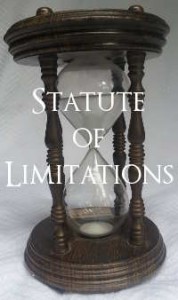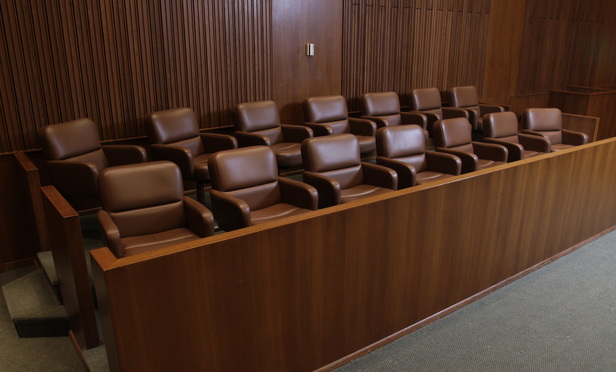Sufficiency Challenge : Should Be Assessed Against The Elements Of The Charged Crime, Not Against An Erroneously Heightened Jury Instruction.
The United States Supreme Court
United States v Musacchio
No. 14-1095.
Decided January 25, 2016
Issue: Whether the sufficiency of the evidence in a criminal case should be measured against the elements described in the trial court’s instructions to the jury, where those instructions, without objection, require the Government to prove more elements than do the statute and indictment.
HoldingThe United States Supreme Court held that a sufficiency challenge should be assessed against the elements of the charged crime, not against the elements set forth in an erroneous jury instruction.
Sufficiency review essentially addresses whether the Governments case was strong enough to reach the jury. A reviewing court conducts a limited inquiry tailored to ensuring that a defendant receives the minimum required by due process: a meaningful opportunity to defend against the charge against him and a jury finding of guilt beyond a reasonable doubt, Jackson v. Virginia, 443 U.S. 307, 314-315.
Facts: In November 2010, a grand jury indicted Musacchio under 18 U. S. C. 1030(a)(2)(C). Under that provision, a person commits a crime when he intentionally accesses a computer without authorization or exceeds authorized access, and in doing so obtains information from any protected computer. The statute thus provides two ways of committing the crime of improperly accessing a protected computer: (1) obtaining access without authorization; and (2) obtaining access with authorization but then using that access improperly. See ibid.; 1030(e)(6) (defining exceeds authorized access). Count 1 of the indictment charged Musacchio with conspiring to commit both types of improper access. Count 23 charged him with making unauthorized access to ETSs e-mail server on or about November 24, 2005. App. 70-71.
Musacchio proceeded to a jury trial. At no time before or during trial did he argue that his prosecution violated the 5-year statute of limitations applicable to count 2, see 18 U. S. C. 3282(a). For the Governments part, it submitted proposed jury instructions on the conspiracy count before and during the trial. Each set of proposed instructions identified that count as involving Unauthorized Access to Protected Computer[s], and none required the jury additionally to find that Musacchio conspired to exceed authorized access to protected computers. Musacchio did not propose instructions on the conspiracy count. Diverging from the indictment and the proposed instructions, the District Court instructed the jury on count 1 that 1030(a)(2)(C) makes it a crime for a person to intentionally access a computer without authorization and exceed authorized access. App. 168).
The parties agree that this instruction was erroneous: By using the conjunction and when referring to both ways of violating 1030(a)(2)(C), the instruction required the Government to prove an additional element. Yet the Government did not object to this error in the instructions. The jury found Musacchio guilty on both counts 1 and 2. The District Court sentenced him to 60 months imprisonment. Musacchio appealed, making the two challenges that he again advances in this Court. First, he challenged the sufficiency of the evidence supporting his conspiracy conviction on count 1. He maintained, moreover, that the sufficiency of the evidence should be assessed against the erroneous jury instruction that included the additional element. Second, he argued, for the first time, that his prosecution on count 2 for unauthorized access was barred by the 5-year statute of limitations because the superseding indictment was filed seven years after the crime and did not relate back to the timely original indictment. The Fifth Circuit rejected both challenges and affirmed. The United States Supreme Court granted certiorari to resolve these questions.
Legal Analysis: The United States Supreme Court granted certiorari to resolve two questions that have divided the lower courts. 576 U.S.____(2015).
The first question is whether the sufficiency of the evidence in a criminal case should be measured against the elements described in the jury instructions where those instructions, without objection, require the Government to prove more elements than do the statute and indictment. Compare, e.g., United States v Romero, 136 F.1268, 1272-1273 (CA10 1998), with Guevara, supra, at 258 (CA5).
The second question is whether a statute of limitations defense not raised at or before trial is reviewable on appeal. Compare, e.g. United States v Franco-Santiago, 681 F.3d 1, 12, and n.18 (CA1 2012), with United States v Walsh, 700 F.2d 846, 855-856 (CA2 1983) .
1st Issue:
The Court held that they would first address how a court should assess a sufficiency challenge when a jury instruction adds an element to the charged crime and the Government fails to object. The Court held that, when a jury instruction sets forth all the elements of the charged crime but incorrectly adds one more element, a sufficiency challenge should be assessed against the elements of the charged crime, not against the erroneously heightened command in the jury instruction. That conclusion flows from the nature of a court’s task in evaluating a sufficiency-of-the-evidence challenge. Sufficiency review essentially addresses whether the Government’s case was so lacking that it should not have even been submitted to the jury. Burks v. United States, 437 U. S. 1, 16 (1978).
On sufficiency review, a reviewing court makes a limited inquiry tailored to ensure that a defendant receives the minimum that due process requires: a meaningful opportunity to defend against the charge against him and a jury finding of guilt beyond a reasonable doubt. Jackson v. Virginia, 443 U. S. 307, 314?315 (1979). The reviewing court considers only the legal question whether, after viewing the evidence in the light most favorable to the prosecution, any rational trier of fact could have found the essential element of the crime beyond a reasonable doubt. Id., at 319.
A reviewing court’s limited determination on sufficiency review thus does not rest on how the jury was instructed. When a jury finds guilt after being instructed on all elements of the charged crime plus one more element, the jury has made all the findings that due process requires. If a jury instruction requires the jury to find guilt on the elements of the charged crime, a defendant will have had a meaningful opportunity to defend against the charge. Id., at 314. And the jury instruction requires the jury to find those elements beyond a reasonable doubt, the defendant has been accorded to the procedure that the United States Supreme Court has required to protect the presumption of innocence. The Governments failure to introduce evidence of an additional element does not implicate the principles that sufficiency review protects. All that a defendant is entitled to on a sufficiency challenge is for the court to make a legal determination whether the evidence was strong enough to reach a jury at all. Id., at 319. The Governments failure to object to the heightened jury instruction thus does not affect the court’s review for sufficiency of the evidence
Musacchio does not contest that the indictment here properly charged him with the statutory elements for conspiracy to obtain unauthorized access. The jury instructions required the jury to find all of the elements of that charged offense beyond a reasonable doubt. Nor does he dispute that the evidence was sufficient to convict him of the crime charged in the indictment of conspiring to make unauthorized access. Accordingly, the Fifth Circuit correctly rejected his sufficiency challenge. The Fifth Circuit erred, however, in basing that conclusion on the law-of-the-case doctrine. See 590 Fed. Appx., at 362?363. That doctrine does not apply here. The law of-the-case doctrine generally provides that, when a court decides upon a rule of law, that decision should continue to govern the same issues in subsequent stages in the same case, Pepper v. United States, 562 U. S. 476, 506 (2011) (quoting Arizona v. California, 460 U. S. 605, 618 (1983)).
The doctrine expresses the practice of courts generally to refuse to reopen what has been decided, but it does not limit courts power, Messenger v. Anderson, 225 U. S. 436, 444 (1912). Thus, the doctrine may describe an appellate court’s decision not to depart from a ruling that it made in a prior appeal in the same case. See C. Wright et al., 18B Federal Practice and Procedure 4478, p. 646, and n. 16 (2d ed. 2002) (collecting cases). But the doctrine is something of a misnomer when used to describe how an appellate court assesses a lower court’s rulings. United States v. Wells, 519 U. S. 482, 487, n. 4 (1997). An appellate court’s function is to revisit matters decided in the trial court. When an appellate court reviews a matter on which a party failed to object below, its review may well be constrained by other doctrines such as waiver, forfeiture, and estoppel, as well as by the type of challenge that it is evaluating. But it is not bound by district court rulings under the law-of-the-case doctrine. That doctrine does not bear on how to assess a sufficiency challenge when a jury convicts a defendant after being instructed without an objection by the Government on all charged elements of a crime plus an additional element.
2nd Issue
The Court held that whether a defendant may successfully raise the statute-of-limitations bar in 18 U. S. C. 3282(a) for the first time on appeal. Musacchio argues that he may do so, either because 3282(a) imposes a nonwaivable limit on federal courts subject-matter jurisdiction or because a previously unraised limitations claim may constitute plain error that can be noticed on appeal. The Court held that they disagree with both points, and hold that a defendant cannot successfully raise this statute-of-limitations bar for the first time on appeal. Statutes of limitations and other filing deadlines ordinarily are not jurisdictional. Sebelius v. Auburn Regional Medical Center, 568 U. S. ___, ___ (2013) (slip op., at 8). The Court held that they treat a time bar as jurisdictional only if Congress has clearly stated that it is. Id., at ___ (slip op., at 6 7); see, e.g., Henderson v. Shinseki, 562 U. S. 428, 436, 439 (2011). To determine whether Congress has made the necessary clear statement, we examine the text, context, and relevant historical treatment of the provision at issue.
To determine whether Congress has made the necessary clear statement, we examine the text, context, and relevant historical treatment of the provision at issue. Reed Elsevier, Inc. v. Muchnick, 559 U. S. 154, 166 (2010). Congress has not made such a clear statement here. Rather, the statutory text, context, and history establish that 3282(a) imposes a nonjurisdictional defense that becomes part of a case only if a defendant raises it in the district court.
 The statutory text suggests that 3282(a) does not impose a jurisdictional limit. Section 3282(a) provides: Except as otherwise expressly provided by law, no person shall be prosecuted, tried, or punished for any offense not capital, unless the indictment is found or the information is instituted within five years next after such offense shall have been committed.
The statutory text suggests that 3282(a) does not impose a jurisdictional limit. Section 3282(a) provides: Except as otherwise expressly provided by law, no person shall be prosecuted, tried, or punished for any offense not capital, unless the indictment is found or the information is instituted within five years next after such offense shall have been committed.
Although 3282(a) uses mandatory language, it does not expressly refer to subject-matter jurisdiction or speak in jurisdictional terms. The text of 3282(a) does not, therefore, provide a clear indication that Congress wanted that provision to be treated as having jurisdictional attributes. Henderson, supra, at 439. Context confirms that 3282(a) does not impose a jurisdictional limit. Federal courts general criminal subject matter jurisdiction comes from 18 U. S. C. 3231, which states: The district courts shall have original jurisdiction of all offenses against the laws of the United States. Section 3231 speaks squarely to federal courts jurisdiction, in marked contrast to 3282(a), which does not mention jurisdiction or a variant of that term. And, nothing in 3231 conditions its jurisdictional grant on compliance with 3282(a)s statute of limitations,
The district courts shall have original jurisdiction of all offenses against the laws of the United States. Section 3231 speaks squarely to federal courts jurisdiction, in marked contrast to 3282(a), which does not mention jurisdiction or a variant of that term. And, nothing in 3231 conditions its jurisdictional grant on compliance with 3282(a)s statute of limitations,
The district courts shall have original jurisdiction of all offenses against the laws of the United States. Section 3231 speaks squarely to federal courts jurisdiction, in marked contrast to 3282(a), which does not mention jurisdiction or a variant of that term. And, nothing in 3231 conditions its jurisdictional grant on compliance with 3282(a)s statute of limitations, Reed Elsevier, supra, at 165. This context supports the conclusion that 3282(a) is not jurisdictional.
The history of the limitations bar in 3282(a) demonstrates that it is a defense that becomes part of a case only if the defendant presses it in the district court. This Court held in United States v. Cook, 17 Wall. 168 (1872), that a statute of limitations identical in all relevant respects to 3282(a)was a matter of defense and must be pleaded or given in evidence by the accused. Id., at 181; 32, 1 Stat. 119 (statute of limitations); see also Cook, supra, at 173, and n.
When a defendant introduces the limitations defense into the case, the Government then has the right to reply or give evidence on the limitations claim, 17 Wall., at 179. Cook was decided more than 140 years ago and the Court held that they adhered to its holding.
 Because 3282(a) does not impose a jurisdictional limit, the failure to raise it at or before trial means that it is reviewable on appeal, if at all, only for plain error. See Fed. Rule Crim. Proc. 52(b). The Court of Appeals concluded, however, that a district court’s failure to enforce an unraised limitations defense under 3282(a) cannot be a plain error.
Because 3282(a) does not impose a jurisdictional limit, the failure to raise it at or before trial means that it is reviewable on appeal, if at all, only for plain error. See Fed. Rule Crim. Proc. 52(b). The Court of Appeals concluded, however, that a district court’s failure to enforce an unraised limitations defense under 3282(a) cannot be a plain error.
As explained above, a statute-of-limitations defense becomes part of a case only if the defendant puts the defense in issue. When a defendant presses a limitations defense, the Government then bears the burden of establishing compliance with the statute of limitations by presenting evidence that the crime was committed within the limitations period or by establishing an exception to the limitations period, Cook, supra, at 179. When a defendant fails to press a limitations defense, the defense does not become part of the case and the Government does not otherwise have the burden of proving that it filed a timely indictment. When a defendant does not press the defense, then, there is no error for an appellate court to correct and certainly no plain error A defendant thus cannot successfully raise the statute-of-limitations defense in 3282(a) for the first time on appeal.
The Fifth Circuit correctly refused to consider Musacchio’s limitations defense here. The order of the Fifth Circuit Court of Appeals is affirmed.
